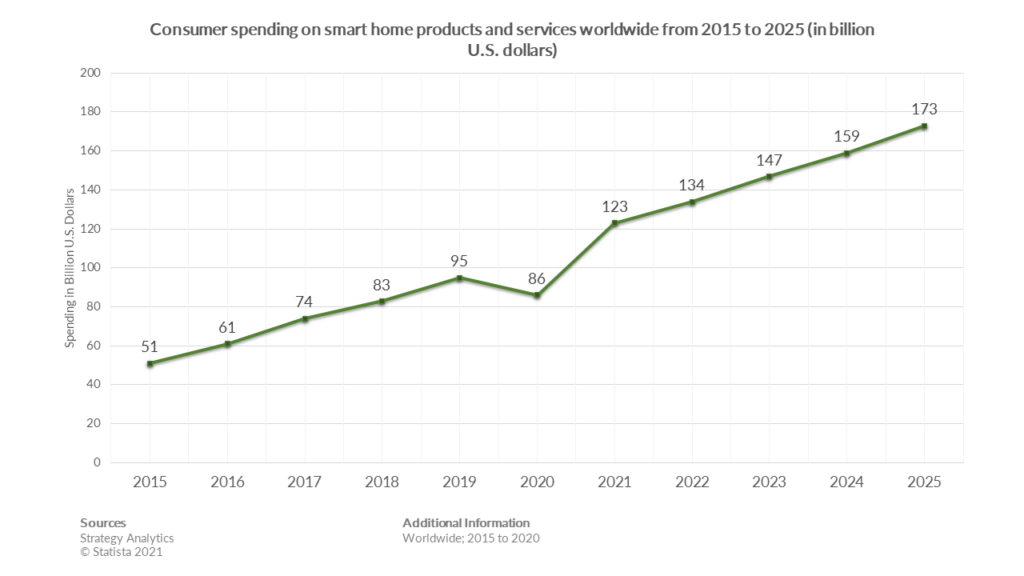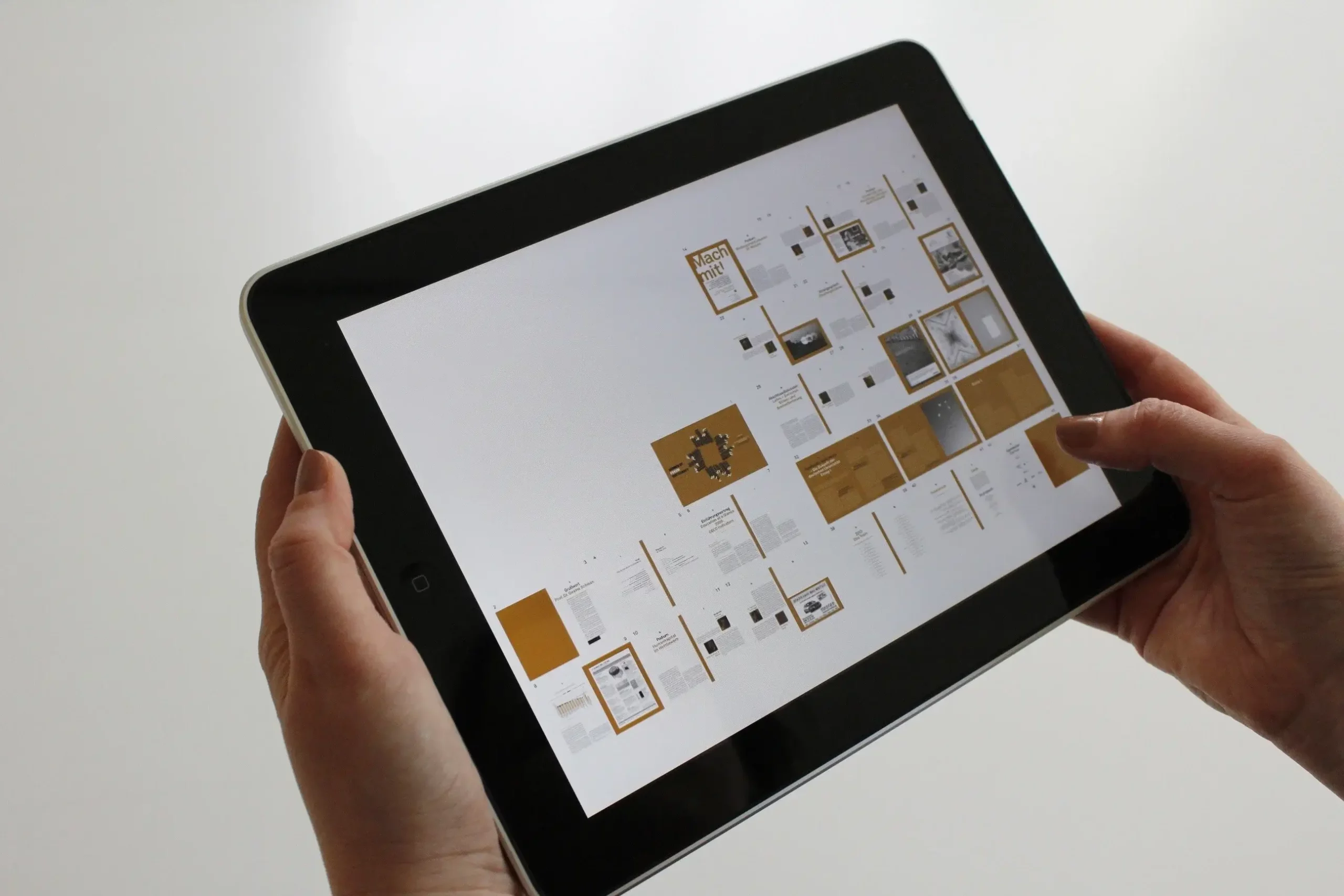Consumer spending on smart home products and services has risen in recent years, with more and more consumers adopting smart technology to enhance their homes. According to a recent report, worldwide consumer spending on smart home-related devices is forecasted to grow to more than 170 billion U.S. dollars by 2025. This represents a significant increase from the estimated 86 billion U.S. dollars spent in 2020. Part of the increasing growth might be progress towards more industry standards, such as the new Matter standard supported by all major players. Other obstacles are privacy concerns and more, as analyzed by McKinsey here.
The growth of this market can be attributed to various factors, including an increasing desire for convenience and security, as well as advancements in technology that make smart home devices more accessible and affordable. In addition, the COVID-19 pandemic has also played a role in accelerating the adoption of smart home technology as people spend more time at home and seek ways to make their living spaces safer and more comfortable.
Complete Overview of Consumer Spending from 2019 to 2025
The demand for smart home devices has risen in recent years, with worldwide consumer spending reaching $95 billion in 2019. This figure dropped slightly to $86 billion in 2020, likely due to economic uncertainty caused by the COVID-19 pandemic. However, the market bounced back and grew even bigger, with global spending on smart home products and services hitting $123 billion in 2021.
This trend will continue as more people adopt smart technology into their homes. Experts predict that worldwide consumer spending on smart home devices and services will reach an impressive $173 billion by 2025. With this rapid growth, it’s clear that consumers recognize the benefits of these technologies, from increased energy efficiency to improved security measures. As such, companies are investing heavily in research and development to meet this increasing demand and provide innovative manufacturing solutions that can keep up with changing consumer needs.

What Benefits Do Smart Home Systems & Services Provide?
Smart home systems have gained immense popularity in recent years, and for a good reason. These systems provide an array of benefits to homeowners and can be easily managed through a smartphone or computer. The ability to control various functions such as lighting, temperature, security, and entertainment from anywhere at any time provides convenience and peace of mind.
One of the primary benefits of smart home systems is energy efficiency. By controlling lighting and temperature remotely, homeowners can save on their energy bills by ensuring they only use power when necessary. Additionally, security features such as smart locks and cameras provide an added layer of protection that traditional home security systems may not offer.
Another benefit is the ability to streamline daily tasks. With smart appliances like refrigerators, ovens, and washing machines connected to the system, homeowners can receive notifications about maintenance needs or even start a load of laundry from their phones while away from home. The product development process has by now catered to almost anything, from smart toasters to smart shoes.
Why is the Smart Home Market Growing Fastly?
The global smart home market is experiencing rapid growth, and there are many reasons for this trend. One of the most significant drivers of this market expansion is the rising sense of home safety and security. Homeowners worldwide have become increasingly concerned about their well-being and the safety of their families, which has led to a growing demand for smart home technology that can help mitigate these concerns.
Smart homes offer homeowners a wide range of safety features, such as surveillance cameras, motion sensors, and automated alarm systems that can be accessed remotely through smartphones or other connected devices. This level of control provides homeowners with greater peace of mind knowing that they can monitor their homes from anywhere at any time.
An important part is the subscription model that many smart home devices have. Many devices require a monthly fee to access and use. This services aspect is a significant growth factory.
Growing Use of the Internet Promotes the Market
The growth of the global smart home market is primarily driven by the increasing use of the internet and the growing significance of Internet of Things (IoT) technology. IoT has revolutionized various industries, and its impact on smart homes cannot be ignored. Integrating IoT electronic components production with smart homes has led to more efficient energy management, enhanced security features, and improved convenience for homeowners.
With IoT technology, users can connect their devices seamlessly to their smartphones or tablets, enabling them to control appliances from anywhere in the house or remotely. This technology also allows for better energy consumption monitoring and helps homeowners save on electricity bills. Furthermore, IoT smart home solutions are becoming more affordable than ever, making them accessible to a wider range of consumers.
As a result, many companies are investing heavily in developing innovative products that integrate seamlessly with existing home infrastructure while providing an intuitive user experience.
What Product Impact the Market with the Highest Growth Rate?
The smart speaker segment is anticipated to post the fastest development worldwide due to a rise in the utilization of multifunction devices by the younger generation, as well as the growth of personalization technologies. Although the U.S. is the world’s largest market for smart speakers, China is expected to see the fastest adoption of this technology; consequently, smart speakers are a promising investment area for the next five years.
Wrapping Up
I hope you will enjoy this blog and quickly get essential facts about how much consumer spending on smart home devices in recent years and how the worldwide market is grown.




